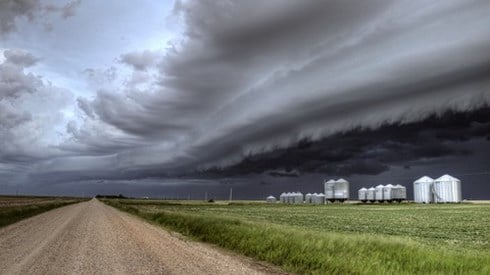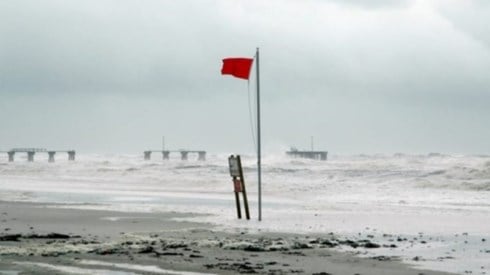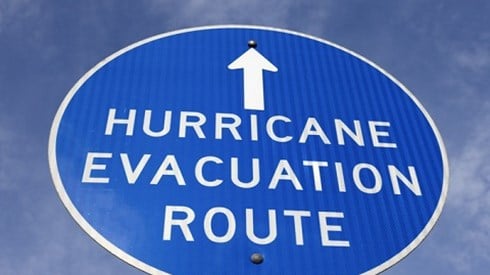First-Half Natural Catastrophe Insured Losses Estimated at $50 Billion

August 14, 2023

Global insured losses from natural catastrophes reached $50 billion during the first half of this year, up from $48 billion during the same period last year, according to the Swiss Re Institute.
The first-half insured natural catastrophe losses were the second largest since 2011, Swiss Re said.
The total economic cost of first-half natural disasters was $125 billion, Swiss Re said. That total included $5 billion in losses from human-made catastrophes, of which $4 billion was insured. The first-half economic losses resulting from natural catastrophes were below the $123 billion during the first half of 2022 but were 46 percent above the 10-year average, according to Swiss Re.
Thunderstorms in the United States were the principal driver of first-half insured natural catastrophe losses, accounting for 68 percent of natural catastrophe losses worldwide during the period, well above the 10-year average, according to Swiss Re. The magnitude of the thunderstorm losses highlights the increasing impacts of secondary perils, the reinsurer said.
Swiss Re reported that severe convective storms—storms associated with thunder, lightning, heavy rain, strong winds, and sudden temperature changes—caused $35 billion in insured losses worldwide during the first half of 2023. Those 6-month losses were almost twice as high as the annual average over the last 10 years of $18.4 billion, Swiss Re said.
In the United States, a series of severe thunderstorms resulted in insured losses of $34 billion during the first half of 2023, the highest insured losses ever from the peril in a 6-month period, Swiss Re said. Ten events were responsible for losses of at least $1 billion during the period, compared to an annual average of six such events over the previous ten years. Texas was the US state most affected by the storms.
New Zealand experienced 2 severe weather events just 2 weeks apart in early 2023, Swiss Re said. The events highlighted the growing risk of weather-related perils hitting large urban centers, the reinsurer said, with the North Island of New Zealand experiencing two first-quarter events including severe flooding in Auckland and the remnants of Cyclone Gabrielle. The two events became the costliest weather-related insured loss events in New Zealand since 1970, Swiss Re said, with combined insured losses estimated at $2.3 billion.
"With severe thunderstorms as the main driver for above-average insured losses in the first half of 2023, this secondary peril becomes one of the dominant global drivers of insured losses," Martin Bertogg, head of catastrophe perils at Swiss Re, said in a statement.
"The above‑average losses reaffirm a 5–7 percent annual growth trend in insured losses, driven by a warming climate but even more so, by rapidly growing economic values in urbanized settings, globally," Mr. Bertogg said. "The cyclone and flood events in New Zealand in the first quarter of 2023 are testimonies of the risk to today's large urban centers, continuing patterns observed in 2021 in the Germany flooding, and in 2022 in Australia and South Africa."
Swiss Re said the increase in extreme weather events is evidence of the impact of climate change.
"The effects of climate change can already be seen in certain perils like heatwaves, droughts, floods, and extreme precipitation," said Jérôme Jean Haegeli, group chief economist at Swiss Re. "Besides the impact of climate change, land use planning in more exposed coastal and riverine areas, and urban sprawl into the wilderness, generate a hard-to-revert combination of high value exposure in higher risk environments. Protective measures need to be taken for insurance products to remain economical for such properties at high risk. It is high time to invest in more climate adaption."
Swiss Re cited heavy rainfalls in northern Italy in mid-May that caused extensive flooding and expected insured losses in excess of $600 million. It was the costliest weather-related event in Italy since 1970, the reinsurer said.
The Italian flooding resulted in estimated economic losses of $10 billion, Swiss Re said, meaning that 94 percent of losses were uninsured, speaking to the importance of closing the insurance protection gap and helping households strengthen their financial resilience against natural catastrophes.
Swiss Re noted that northern Italy had experienced drought conditions over the past 2 years, and with the heavy rainfall the ground quickly became saturated, increasing runoff and flooding. "The overall trend shows a significant increase in drought in southern Europe," the August 9, 2023, Swiss Re statement said. "However, changes in seasonality may lead to less frequent but more intense heavy rain events."
Beyond weather-related events, Swiss Re noted that earthquakes continue to be responsible for some of the most severe humanitarian and financial consequences. A February earthquake in Turkey and Syria was responsible for an estimated $5.3 billion in insured losses and $34 billion in economic losses, making it the single costliest first-half disaster in terms of both insured and economic losses.
Swiss Re also cited the extreme heat occurring in various regions in the United States, China, and southern Europe since early July. The reinsurer mentioned dry weather conditions and strong winds that aggravated wildfires in southern Europe, on many Greek Islands, in Italy and Algeria but said it's too early to estimate the ultimate economic and insured losses from those events.
August 14, 2023




